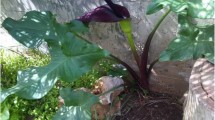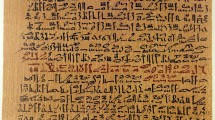Abstract
Background: Aconite poisoning is a severe, life-threatening poisoning related to the use of traditional Chinese medicine (TCM). Despite current legislation, repeated poisoning cases are steadily encountered.
Objective: The aim of the study was to summarize the clinical features and to elucidate the causative and contributory factors leading to aconite poisoning.
Methods: This study was conducted within the Hospital Authority Toxicology Reference Laboratory, which is the sole tertiary referral clinical toxicology laboratory in Hong Kong. This retrospective study reviewed all confirmed aconite poisoning cases handled by a clinical toxicology laboratory between April 2004 and July 2009. The diagnosis in all cases was confirmed biochemically by detecting aconitum alkaloids in urine specimens. Additionally, herbal specimens were morphologically identified and herbal formulae were studied and transcribed. The cause of poisoning for each case was determined whenever possible.
Results: Fifty-two cases were examined in this aconite poisoning case series. Neurological, cardiovascular and gastrointestinal toxicities were encountered in 49 (94.2%), 46 (88.5%) and 31 (59.6%) patients, respectively. The poisoning was severe in 6 (11.5%) patients, moderate in 17 (32.7%) patients and mild in 29 (55.8%) patients. Amongst 44 patients (84.6%) in whom the underlying reasons of poisoning could be determined, four major causes were found. These included overdose- prescription of a higher than recommended dosage of aconite herbs in 17 (32.7%) cases; ‘hidden’ poisoning (the aconite herb was not prescribed but dispensed inadvertently) in 17 (32.7%) cases; usage of inadequately processed herbs in 7 (13.5%) cases; and dispensary error in 2 (3.9%) cases. No case fatality was recorded.
Conclusion: In the majority of cases in this series, the causes of poisoning can be traced to poor-quality herbs, poor quality of prescription practice, or dispensary errors. The quality issues of TCM practice should be critically addressed to minimize this poisoning threat.









Similar content being viewed by others
References
Chan TY, Tomlinson B, Tse LK, et al. Aconitine poisoning due to Chinese herbal medicines: a review. Vet Hum Toxicol 1994 Oct; 36(5): 452–5
Li Y, Zhoa YY, Yu HP, et al. Pharmacopoeia of the People’s Republic of China: Beijing: People’s Health Publishing House and Chemical Technology Press, 2010
Gogtay NJ, Bhatt HA, Dalvi SS, et al. The use and safety of non-allopathic Indian medicines. Drug Saf 2002; 25(14): 1005–19
Chan TY. Aconite poisoning. Clin Toxicol (Phila) 2009 Apr; 47(4): 279–85
Chan TY. Aconitine poisoning: a global perspective. Vet Hum Toxicol 1994 Aug; 36(4): 326–8
Yoshioka N, Gonmori K, Tagashira A, et al. A case of aconitine poisoning with analysis of aconitine alkaloids by GC/SIM. Forensic Sci Int 1996 Aug 15; 81(2–3): 117–23
Lowe L, Matteucci MJ, Schneir AB. Herbal aconite tea and refractory ventricular tachycardia [letter]. N Engl J Med 2005 Oct 6; 353(14): 1532
Fitzpatrick AJ, Crawford M, Allan RM, et al. Aconite poisoning managed with a ventricular assist device. Anaesth Intensive Care 1994 Dec; 22(6): 714–7
Fujita Y, Terui K, Fujita M, et al. Five cases of aconite poisoning: toxicokinetics of aconitines. J Anal Toxicol 2007 Apr; 31(3): 132–7
Smith SW, Shah RR, Hunt JL, et al. Bidirectional ventricular tachycardia resulting from herbal aconite poisoning. Ann Emerg Med 2005 Jan; 45(1): 100–1
But PP, Tai YT, Young K. Three fatal cases of herbal aconite poisoning. Vet Hum Toxicol 1994 Jun; 36(3): 212–5
Chan TY. Incidence of herb-induced aconitine poisoning in Hong Kong: impact of publicity measures to promote awareness among the herbalists and the public. Drug Saf 2002; 25(11): 823–8
Lin CC, Chan TY, Deng JF. Clinical features and management of herb-induced aconitine poisoning. Ann Emerg Med 2004 May; 43(5): 574–9
Pullela R, Young L, Gallagher B, et al. A case of fatal aconitine poisoning by Monkshood ingestion. J Forensic Sci 2008 Mar; 53(2): 491–4
Weijters BJ, Verbunt RJ, Hoogsteen J, et al. Salade malade: malignant ventricular arrhythmias due to an accidental intoxication with Aconitum napellus. Neth Heart J 2008; 16(3): 96–9
Van Landeghem AA, De Letter EA, Lambert WE, et al. Aconitine involvement in an unusual homicide case. Int J Legal Med 2007 May; 121(3): 214–9
Chan TY. Aconite poisoning presenting as hypotension and bradycardia. Hum Exp Toxicol 2009 Dec; 28(12): 795–7
Chinese Medical Council of Hong Kong. Regulation of Chinese medicine [online]. Available from URL: http://www.cmchk.org.hk/pcm/eng/main_rpcm.htm#PCM [Accessed 2011 Jun 30]
Zhao ZZ. An illustrated Chinese Materia Medica in Hong Kong. Hong Kong: School of Chinese Medicine, Hong Kong Baptist University, 2004
Lai CK, Poon WT, Chan YW. Hidden aconite poisoning: identification of yunaconitine and related aconitum alkaloids in urine by liquid chromatography-tandem mass spectrometry. J Anal Toxicol 2006 Sep; 30(7): 426–33
Poon WT, Lai CK, Ching CK, et al. Aconite poisoning in camouflage. Hong Kong Med J 2006 Dec; 12(6): 456–9
Matsuyama KTS, Kakiuchi N, Mikage M. The effect of planting depth, disbudding, and root pruning on root weight and aconite alkaloid content of the tuberous root of aconite. J Nat Med 2007; 61: 127–30
Lu G, Dong Z, Wang Q, et al. Toxicity assessment of nine types of decoction pieces from the daughter root of Aconitum carmichaeli (Fuzi) based on the chemical analysis of their diester diterpenoid alkaloids. Planta Med 2010 May; 76(8): 825–30
Persson HE, Sjoberg GK, Haines JA, et al. Poisoning severity score: grading of acute poisoning. J Toxicol Clin Toxicol 1998; 36(3): 205–13
Chan TY, Tam HP, Lai CK, et al. A multidisciplinary approach to the toxicologic problems associated with the use of herbal medicines. Ther Drug Monit 2005 Feb; 27(1): 53–7
Deng JF, Lin TJ, Kao WF, et al. The difficulty in handling poisonings associated with Chinese traditional medicine: a poison control center experience for 1991–1993. Vet Hum Toxicol 1997 Apr; 39(2): 106–14
Chan TY, Tomlinson B, Critchley JA. Aconitine poisoning following the ingestion of Chinese herbal medicines: a report of eight cases. Aust N Z J Med 1993 Jun; 23(3): 268–71
Ogata MIT, Tuji H, Kasahara Y. Qualitative and quantitative analysis of aconite analogs in Aconitum plants. Report of the Yamagata Prefectural Institute of Public Health 2003; 36: 54–7
Guo LX ZG, Tang GH. A discussion on the prescribed dosage of Aconitum carmichaeli recommended by the Chinese Pharmacopoeia. J Sichuan Tradit Chinese Med 2009; 27(8): 60–2
Wu KM, Farrelly JG, Upton R, et al. Complexities of the herbal nomenclature system in traditional Chinese medicine (TCM): lessons learned from the misuse of Aristolochia-related species and the importance of the pharmaceutical name during botanical drug product development. Phyto-medicine 2007 Apr; 14(4): 273–9
Shaw D. Toxicological risks of Chinese herbs. Planta Med 2010 Dec; 76(17): 2012–8
Acknowledgements
We would like to thank the technical staff who handled the specimens and helped in analytical work.
We declare that we have no conflict of interest. No sources of funding were used to conduct this study or prepare this manuscript.
Author information
Authors and Affiliations
Corresponding author
Rights and permissions
About this article
Cite this article
Chen, S.P.L., Ng, S.W., Poon, W.T. et al. Aconite Poisoning over 5 Years. Drug Saf 35, 575–587 (2012). https://doi.org/10.2165/11597470-000000000-00000
Published:
Issue Date:
DOI: https://doi.org/10.2165/11597470-000000000-00000




